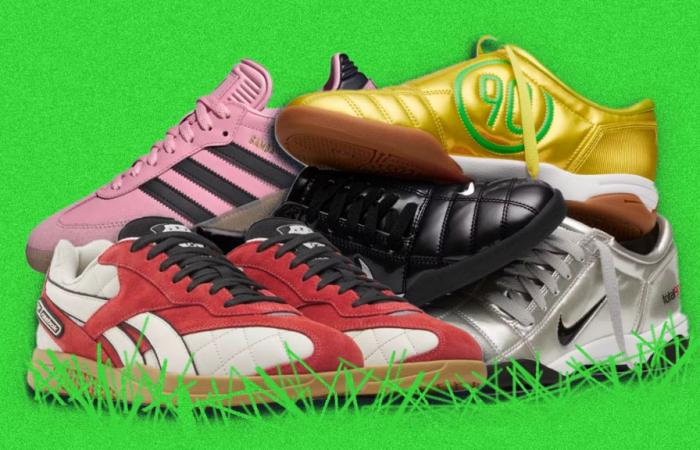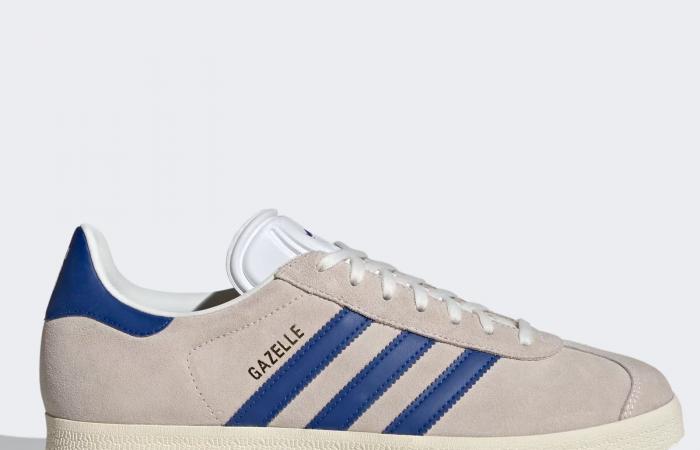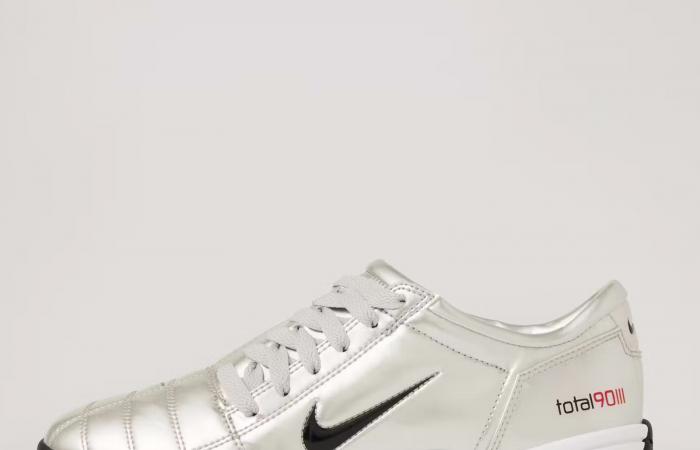But in just a few short years, the Samba has suddenly gone from being a staple shoe to the shoe of the moment, appearing on the feet of celebrities everywhere, from New York Fashion Week to the hottest new restaurants. And the continued success of its low-top silhouette has had a massive impact on the entire sneaker market.
The Adidas Predator 24 League Low Freestyle, inspired by David Beckham’s cleats.© adidas
The Adidas Gazelle “Manchester United” is part of a series of sneakers paying tribute to the club.© adidas
At adidas, this has translated into countless iterations of the Samba, including collaborations with Wales Bonner and the recent pink Messi version. But also a slew of football-inspired colourways for other models like the Gazelle, and new streetwear versions of iconic three-stripe football boots, like David Beckham’s Predators.
Nike, meanwhile, recently added a fold-over tongue to its Cortez and announced a reissue of its Total 90 III cleat from the 2000s. Reebok has resurrected two Samba-inspired soccer shoes, the Hammer Street and the Campio X. Designers like New Yorker Samuel Falzone are also reviving vintage cleats.
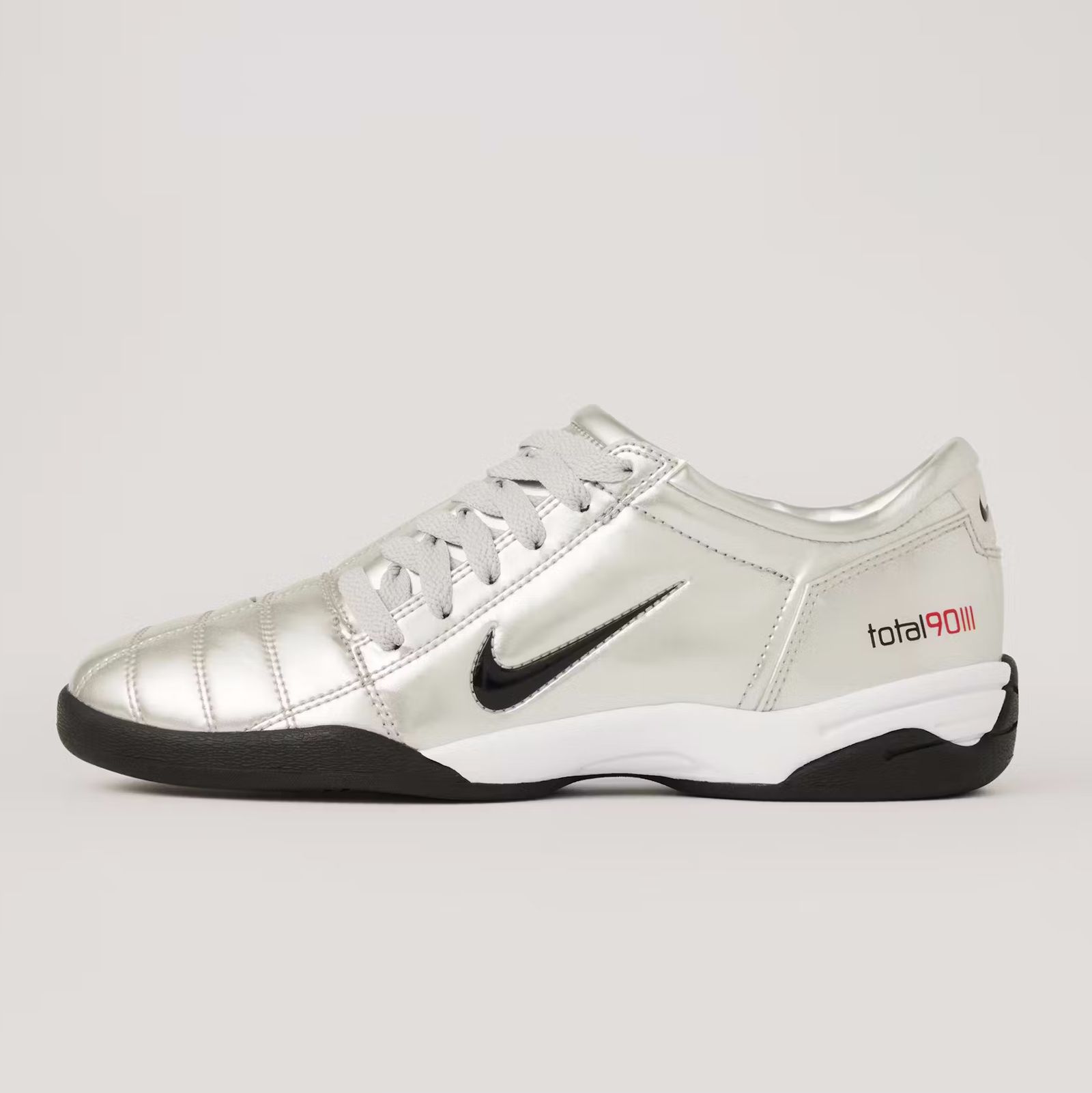
The Nike Total 90 III, a streetwear version of the shoes worn by Wayne Rooney, Luis Figo and many others.© Nike
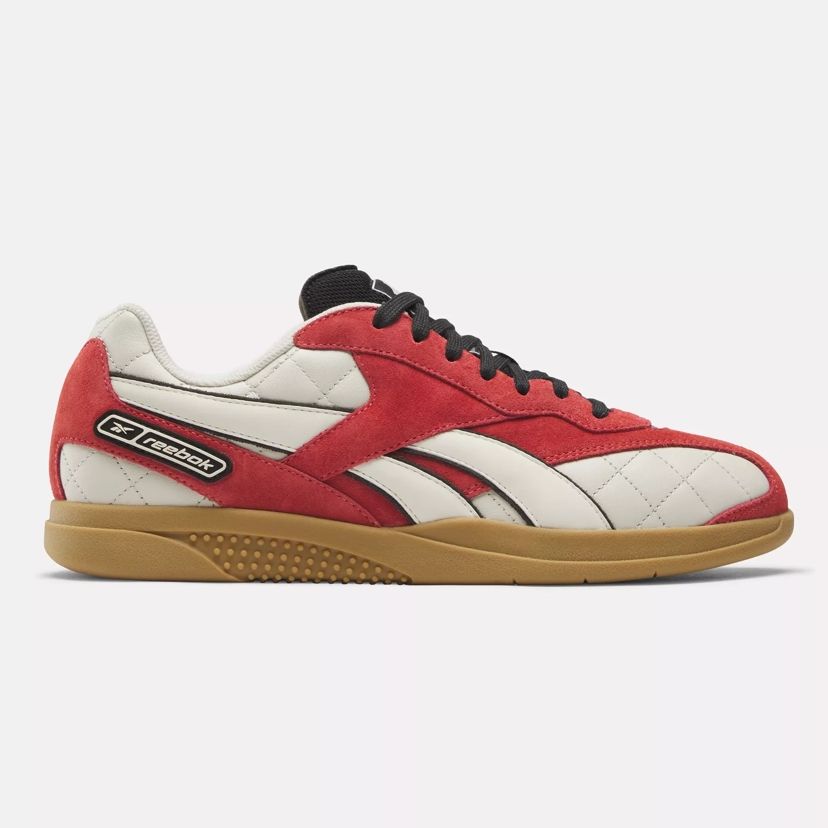
The Reebok Hammer Street, an indoor soccer shoe released in 1993.© Reebok
The rise of soccer-inspired sneakers is so great that it’s challenging the hegemony of basketball in the United States. Five years ago, everyone was swearing by Air Jordans designed by big-name names like Travis Scott, Off-White, and Union. The Golden State Warriors were reigning, LeBron James and the Lakers were gearing up for a title, and the era of superteams was not yet over, with Kyrie and Kevin Durant, James Harden and Russell Westbrook, Kawhi Leonard and Paul George… The culture had its eyes fixed on the sport.
But recently, that’s all starting to change. While it would be foolish to pretend that basketball no longer has an influence on sneakers and streetwear, the NBA is currently in a period of transition, with megastars like LeBron James and Steph Curry entering the final stretch of their careers. The league still has a healthy supply of young superstars like Shai Gilgeous-Alexander and Nikola Jokic, but from a footwear perspective, no player has yet captured the zeitgeist. And when it comes to retro basketball sneakers, the era of resale also seems to be coming to an end, with used Air Jordans going for less and less on sites like StockX.
Basketball will get through this, for sure. Transition periods are natural, but the fact is that a window has opened for football to tighten its grip on culture. As the NBA searches for its next generation of superstars, football’s new heroes are already here: Kylian Mbappé, Jude Bellingham, Vinicius Júnior, Bukayo Saka, Phil Foden or Marcus Rashford seem ready to take up the torch from Messi, Ronaldo or Neymar.
So is football simply enjoying a golden age in terms of its influence on the world? Or is it a genuine rise that is set to last? What is certain is that the youth football page on Adidas’ website has seen a 40% increase in traffic since Messi made his debut with Inter Miami in 2023, with a marked increase not only in shirt sales, but also in youth equipment. And while a new Sneaker Queen will surely eventually dethrone the Samba, football’s hold on culture is now multi-generational, and shows no sign of ending.
Originally published on GQ US

